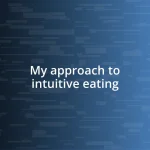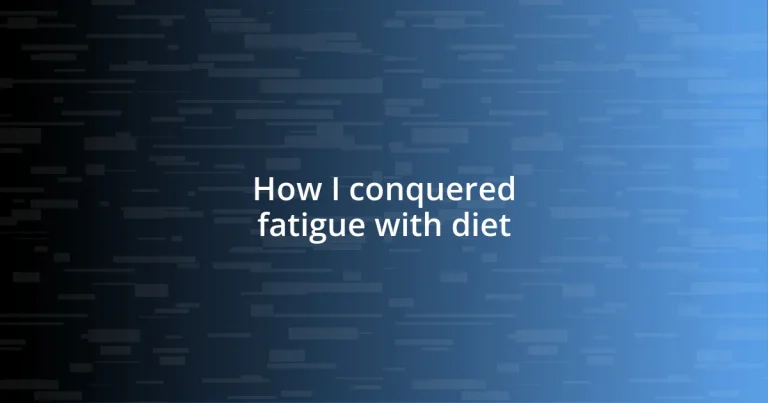Key takeaways:
- Fatigue can stem from various factors, primarily diet and stress; poor nutrition exacerbates feelings of tiredness.
- Implementing nutritional strategies, such as balancing macronutrients, staying hydrated, and consuming antioxidants, significantly boosts energy levels.
- Tracking dietary choices in a food diary helps identify patterns and facilitates adjustments, enhancing overall vitality and combating fatigue effectively.
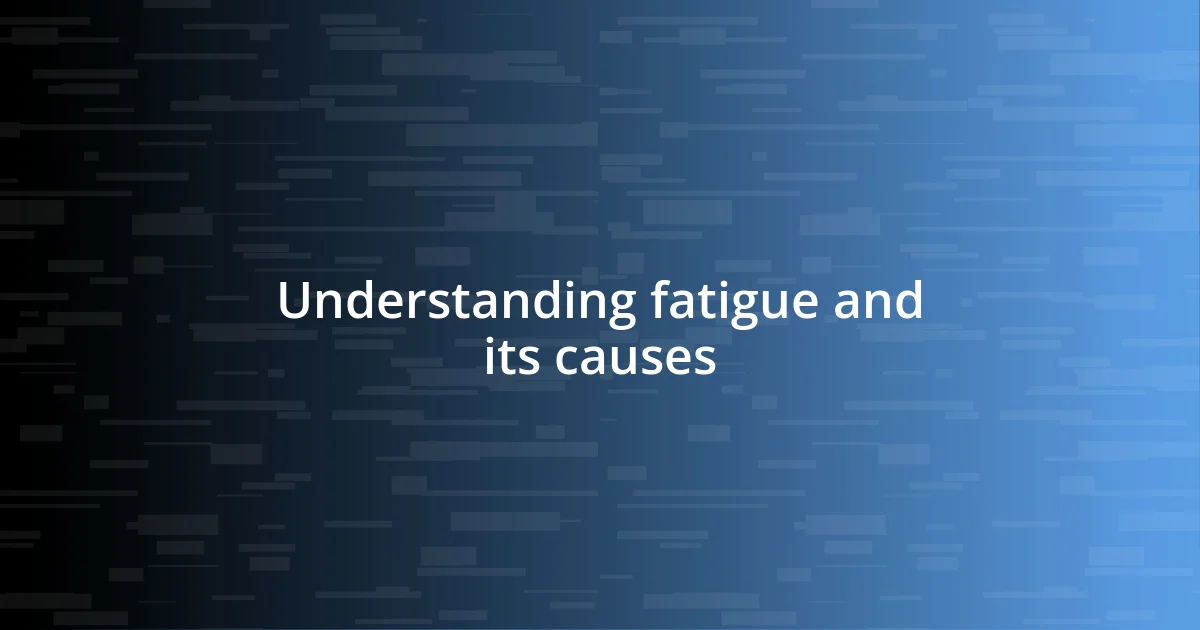
Understanding fatigue and its causes
Fatigue is more than just feeling tired; it can be a complex interplay of factors affecting both body and mind. I remember once dragging myself through a busy day, fueled by caffeine and sheer will, only to realize later that my diet had become almost nonexistent—too many takeout meals and not enough nutrition. This realization struck me hard: could what I was eating really influence how exhausted I felt?
The causes of fatigue can be surprisingly varied, ranging from lifestyle choices to medical conditions. Stress, for instance, has always been a heavyweight in my life, pulling me down into a fatigue I couldn’t shake off. Have you ever noticed how a sleepless night can amplify feelings of worry or anxiety? It’s almost like a vicious cycle; the more stressed I felt, the less I prioritized proper nutrition, which only deepened my fatigue.
Interestingly, inadequate diets rich in processed foods can rob us of vital nutrients, leading to that familiar foggy brain and heavy limbs. I learned this the hard way—after several weeks of quick fixes, I hit a wall. Have you ever felt like you were fighting an uphill battle just to make it through the day? It was during that time I began to question how my food choices were contributing to my relentless fatigue, prompting me to dive deeper into my eating habits.
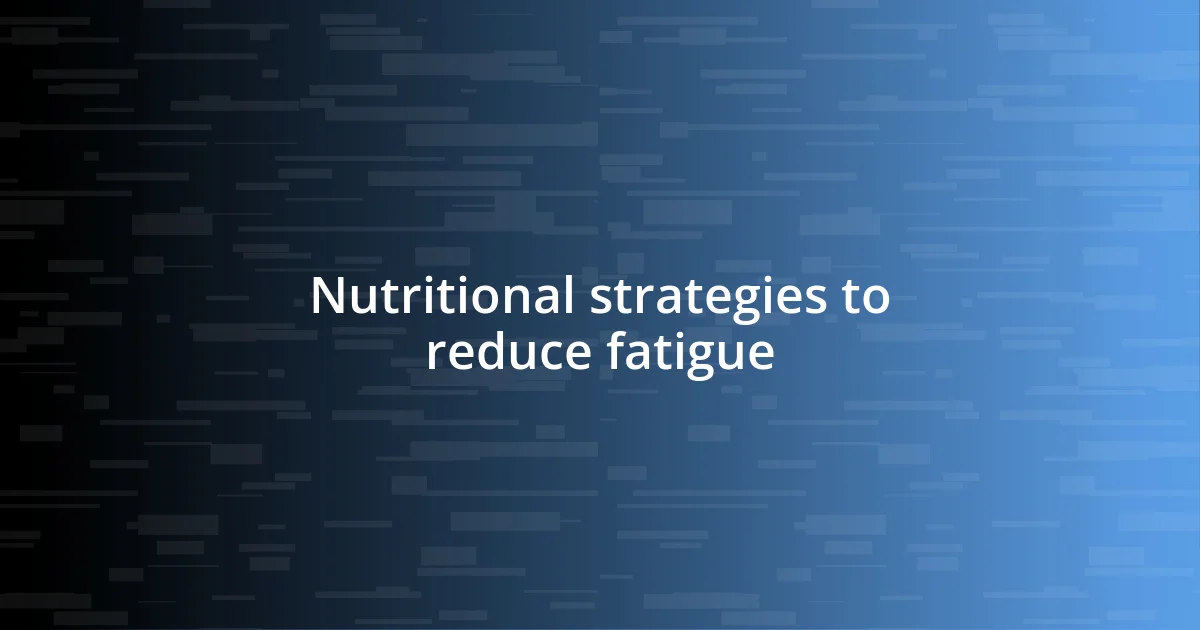
Nutritional strategies to reduce fatigue
When I started to explore nutritional strategies for combating fatigue, I realized that balancing my macronutrients—proteins, fats, and carbohydrates—was crucial. A well-rounded meal has the power to uplift my energy levels and sustain them throughout the day. For instance, incorporating complex carbohydrates like quinoa and brown rice, along with lean proteins such as chicken or chickpeas, made a noticeable difference in my vitality.
Hydration is another often-overlooked factor that directly impacts energy levels. I recalled a day when I was so engrossed in my work that I forgot to drink water. The afternoon slump hit me like a ton of bricks. It dawned on me that even mild dehydration can lead to feelings of tiredness and brain fog. Now, I always keep a water bottle at my desk as a gentle reminder to sip throughout the day.
Lastly, don’t underestimate the power of antioxidants found in colorful fruits and vegetables. I learned this lesson during a particularly exhausting week filled with deadlines. I made a vibrant smoothie packed with spinach, berries, and a hint of ginger. Not only was it refreshing, but the boost in my mood and energy was almost immediate. These simple nutritional changes have become essential tools in my ongoing battle against fatigue.
| Nutritional Strategy | Benefit |
|---|---|
| Balanced Macronutrients | Maintains energy levels |
| Hydration | Prevents tiredness and brain fog |
| Antioxidants | Boosts mood and energy |
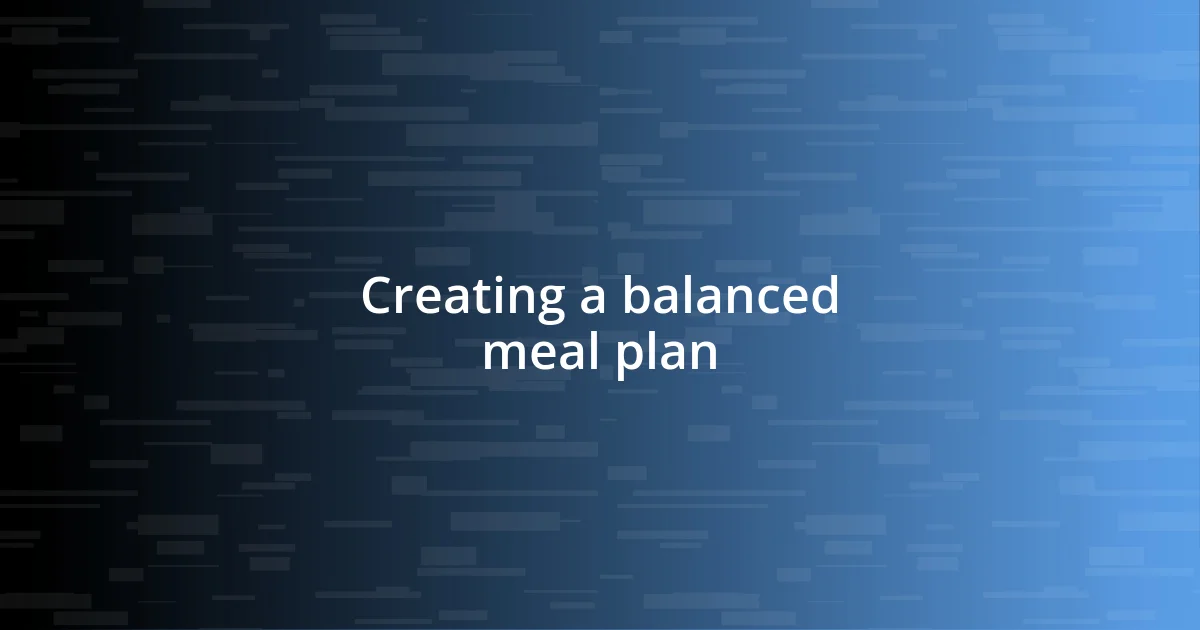
Creating a balanced meal plan
Creating a balanced meal plan is an essential step in tackling fatigue. I found that when I meticulously structured my meals, my energy levels surged. It’s not just about what you eat, but how you combine those foods. For example, I learned that pairing a protein source with healthy fats can create a sustained energy release, meaning I didn’t crash two hours later.
Here’s what I included in my meal plan to keep fatigue at bay:
- Lean Proteins: Chicken, fish, tofu
- Whole Grains: Quinoa, brown rice, whole-grain bread
- Fruits and Vegetables: Berries, spinach, broccoli
- Healthy Fats: Avocado, nuts, olive oil
- Hydration: Water, herbal teas, infused water for a flavor boost
Every time I made an effort to include a variety of colors on my plate, I felt a noticeable lift in my mood and energy. Once, after a particularly tiring week, I decided to whip up a stir-fry with all the colorful veggies I could find. Just seeing the vibrant mix invigorated me, and the meal was a delicious reminder of how nourishing food can brighten up not just my plate, but my overall well-being too.
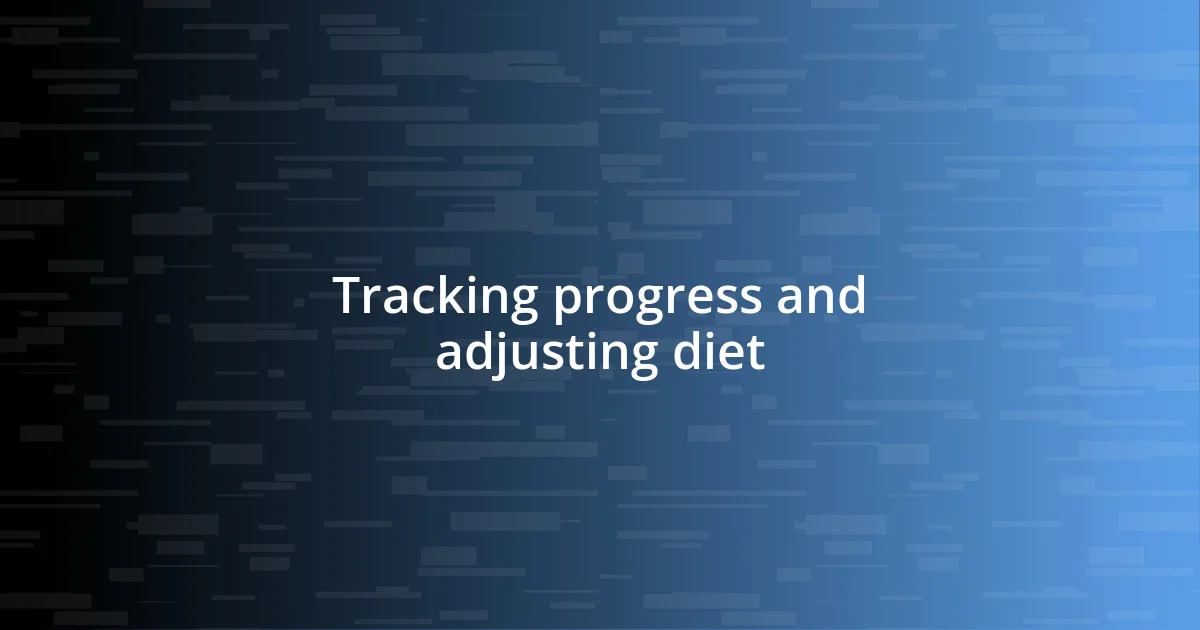
Tracking progress and adjusting diet
Tracking my progress was key in fine-tuning my dietary changes to combat fatigue more effectively. I started using a simple food diary, noting down not just what I ate, but how I felt afterward. It was enlightening to see patterns emerge—for instance, those days when I enjoyed a satisfying lunch of lentils and vegetables versus days where I settled for a quick snack. I often wondered, did the effort really matter? I can assure you, it absolutely did.
Adjusting my diet became an ongoing conversation with myself. There were occasions when I felt a dip in my energy, prompting me to reevaluate my meals. One particularly difficult week, I realized my breakfast was lacking. Swapping my usual toast for a smoothie loaded with protein and greens turned my mornings around. How can something so simple make such a difference? For me, it was about digging deeper into my choices and staying flexible.
Every few weeks, I revisit my food diary to assess and recalibrate my meals. This reflective practice allows me to embrace changes with confidence. When I observed a boost in my vitality after increasing my vegetable intake, I felt an empowering sense of control over my energy levels. It’s not just tracking; it’s about understanding my body’s needs. I find that when I approach my diet this way, fatigue becomes less of a barrier and more of an invitation to learn.
